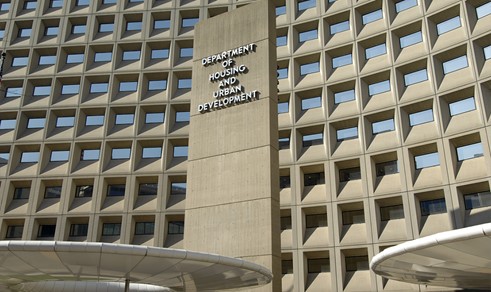Week in Regulation
October 12, 2021
Busy Week Yields Net Savings
In one of the more active weeks in recent memory, agencies published 13 rulemakings with some quantified economic impact estimate. An Environmental Protection Agency (EPA) rule on hydrofluorocarbons (HFCs) and another inter-agency rule on surprise billing provided the bulk of the fireworks. Across all rulemakings, agencies published $2 billion in total net cost savings but added 9.6 million annual paperwork burden hours.
REGULATORY TOPLINES
- Proposed Rules: 37
- Final Rules: 77
- 2021 Total Pages: 56,552
- 2021 Final Rule Costs: $13.5 billion
- 2021 Proposed Rule Costs: $185.7 billion
NOTABLE REGULATORY ACTIONS
The main driver of the week’s cost savings was the final rule from EPA regarding “Phasedown of Hydrofluorocarbons: Establishing the Allowance Allocation and Trading Program Under the American Innovation and Manufacturing Act.” While the rule may be regulatory in nature – since it seeks to restrict the continued usage of HFCs – EPA estimates that it will yield roughly $6.4 billion in net cost savings. As noted when the proposed version came out this past spring, “While EPA estimates that there will be some upfront costs in transitioning toward acceptable HFC substitutes, it also projects that this shift away from HFCs will yield savings going forward since the expected substitutes involved reduced energy consumption (and thus costs) and are less costly to maintain over the long term.”
Cutting across these apparent savings, however, is another rule from the Departments of Health & Human Services, Labor, and Treasury as well as the Office of Personnel Management (collectively, “the agencies”) entitled “Requirements Related to Surprise Billing; Part II.” For those curious about the details of “Part I,” it hit the pages of the Federal Register back in July. This current sequel rule further implements aspects of the No Surprises Act, primarily focusing on updates to the “Federal independent dispute resolution (IDR) (Federal IDR) process.” The agencies estimate that this rule’s new requirements will impose roughly $3.6 billion in total costs and nearly five million hours of new paperwork annually.
TRACKING THE ADMINISTRATIONS
As we have already seen from executive orders and memos, the Biden Administration will surely provide plenty of contrasts with the Trump Administration on the regulatory front. And while there is a general expectation that the new administration will seek to broadly restore Obama-esque regulatory actions, there will also be areas where it charts its own course. Since the AAF RegRodeo data extend back to 2005, it is possible to provide weekly updates on how the top-level trends of President Biden’s regulatory record track with those of his two most recent predecessors. The following table provides the cumulative totals of final rules containing some quantified economic impact from each administration through this point in their respective terms.
![]()
The final rules discussed above provided the bulk of the shifts in the Biden Administration’s cost and paperwork totals. Across the three covered administrations, Biden’s saw the most dramatic changes. There was only the most minimal movement during the Trump era. Meanwhile, the Obama Administration saw an increase in costs (due primarily to a rule on “Prohibiting Discrimination Based on Genetic Information in Health Insurance Coverage and Group Health Plans”) in the hundreds of millions of dollars and a 248,000 decrease in paperwork burdens (due to a cost-cutting measure from EPA).
THIS WEEK’S REGULATORY PICTURE
This week, the Department of Housing and Urban Development (HUD) issues new requirements for evictions during emergencies.

Via HUD.gov
On October 7, HUD published an interim final rule in the Federal Register setting out new requirements for landlords before they evict tenants that have fallen behind on rent during certain national emergencies, such as the ongoing COVID-19 pandemic. As an interim final rule, it takes effect while simultaneously allowing for public comment. HUD eventually should finalize the rule as published or make modifications based on feedback and data from the public comment period.
The rule applies to possible evictions during national emergencies where federal money has been allocated to help those that have fallen behind on rent. In those instances, landlords of tenants in HUD-subsidized public housing and certain properties with project-based rental assistance must extend the amount of time from notice to eviction from 14 to 30 days and provide those tenants with information on the availability of federal rental assistance programs.
The rule comes six weeks after the U.S. Supreme Court ruled that a lower federal court decision to invalidate a federal eviction moratorium should stand. The Supreme Court cited the availability of federal assistance funds as part of the reason why the moratorium should be invalidated.
HUD cites the ending of the eviction moratorium as grounds to waive the comment period before the rule goes into effect. In doing so, HUD aims “to ensure that tenants who are imminently facing eviction for nonpayment of rent and are eligible for ERA funding receive the benefit of this rule’s requirement of notice and an opportunity to access these funds.” HUD also finds that “prior notice and comment is impracticable and would create undue harm by delaying this rule’s effectiveness.”
TOTAL BURDENS
Since January 1, the federal government has published $199.2 billion in total net costs (with $13.5 billion in new costs from finalized rules) and 52.3 million hours of net annual paperwork burden increases (with 46.3 million hours in increases from final rules).












